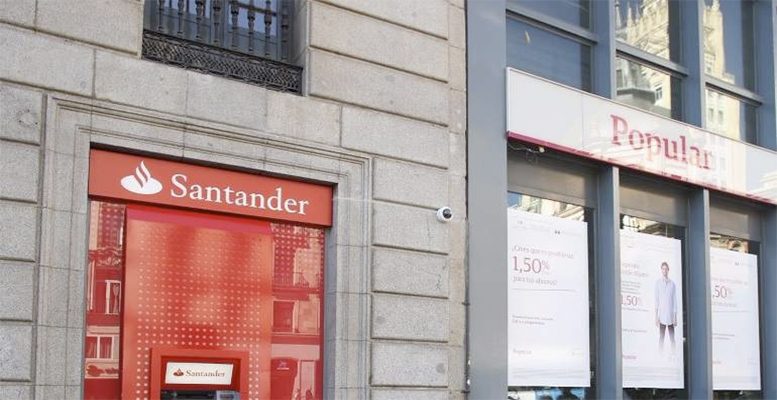Banco Santander earned an attributable profit of € 5, 077 million during the first nine months of 2017, an increase of 10 % compared to the same period last year after €515 million of one – off items. This was driven by further improvements in the quality and recurrence of the Group’s revenues, combined with good cost control and ongoing improvements in credit quality.
Banco Santander Group Executive Chairman, Ana Botín, said:
“Our business has delivered another solid quarter of results – with positive trends and further improvements in earnings quality across all of the markets in which we operate.”
The Group continued to see positive trends across all businesses, with revenues increasing in eight of its ten core markets. Gross income increased by 12% to €36,330 million, + 10% in constant euros (e.g. excluding the impact of exchange rate movements), with net interest income and fee income increasing by 12% and 15% respectively ( + 10% and + 12% in constant euros). As explained by Botín:
“Our Latin American franchises continue to perform extremely well, with excell ent growth in customer numbers and lending, and further improvements in credit quality. And in Europe our business is also performing strongly, despite market challenges.
During the third quarter the Group incurred a number of one- off charges, including a €300 million charge relating to the Popular integration (announced at the time of the acquisition), a €85 million charge relating to the integration of the retail and consumer franchises in Germany, and a €130 million charge relating to equity stakes, intangible assets and other items. Excluding these extraordinary items underlying profit increased by 14% in constant euros to €5,592 million. Santander continued to help people and businesses prosper , with the number of loyal customers (people who see Santand er as their main bank) growing by 1.7 million since 30 September 2016 to 16.5 million (excl. Popular). Lending and customer funds were up by 1% and 8% respectively in constant euros over the same period.
“We have made good progress since acquiring Banco Popular in June 2017 – successfull y raising the required capital, reaching an agreement to dispose of the real estate assets, while regaining more than €10 billion in customer deposits.”
The number of customers using digital services increased by more than 4 million over the last 12 months to 24.2 million (excl. Popular). This progression in digital transformation, combined with strong cost discipline, allowed Santander to maintain its position as one of the most efficient banks in the world . The Group’s cost/income ratio, a key measure of efficiency, remained stable at 46.3% (excl. Popular).
A balanced presence across both mature and emerging markets remains one of Santander’s key strength s , with underlying profit increasing in nine of the Group’s ten core markets. In the first nine months of 2017 Europe contributed 52 % of Group profit and the Americas 48 %. The lending book also remains well diversified across business segments and geographies.
Credit quality continued to improve with non – performing loans (NPL) reducing to 4.24 % , down from 5.37% at 30 June 2017, due mainly to the agreement to sell the €30 billion Popular real estate asset portfolio. Excluding Popular the NPL ratio reduced to 3.51%.
The Group delivered strong growth across all key shareholder measures. Over the last 12 months underlying return on tangible e quity, a key measure of profitability, has increased by 90 basis points to 11.8 % in cl. Popular, among the best of our peers. Tangible net asset value per share increased by 2 % to € 4.2 0 , and earning s per share increased by 6 % to € 0.316 (+11% on an underlying basis).
Santander continued to grow capital organically during the period with the fully loaded CET 1 ratio incr easing to 10.80 % , up 8 basis points since 30 June 2017 . This is significantly higher than the expected minimum regulatory capital requirement for 2019 (9.5%). Excluding one – off items the CET1 ratio would have increased to 10.86%.





